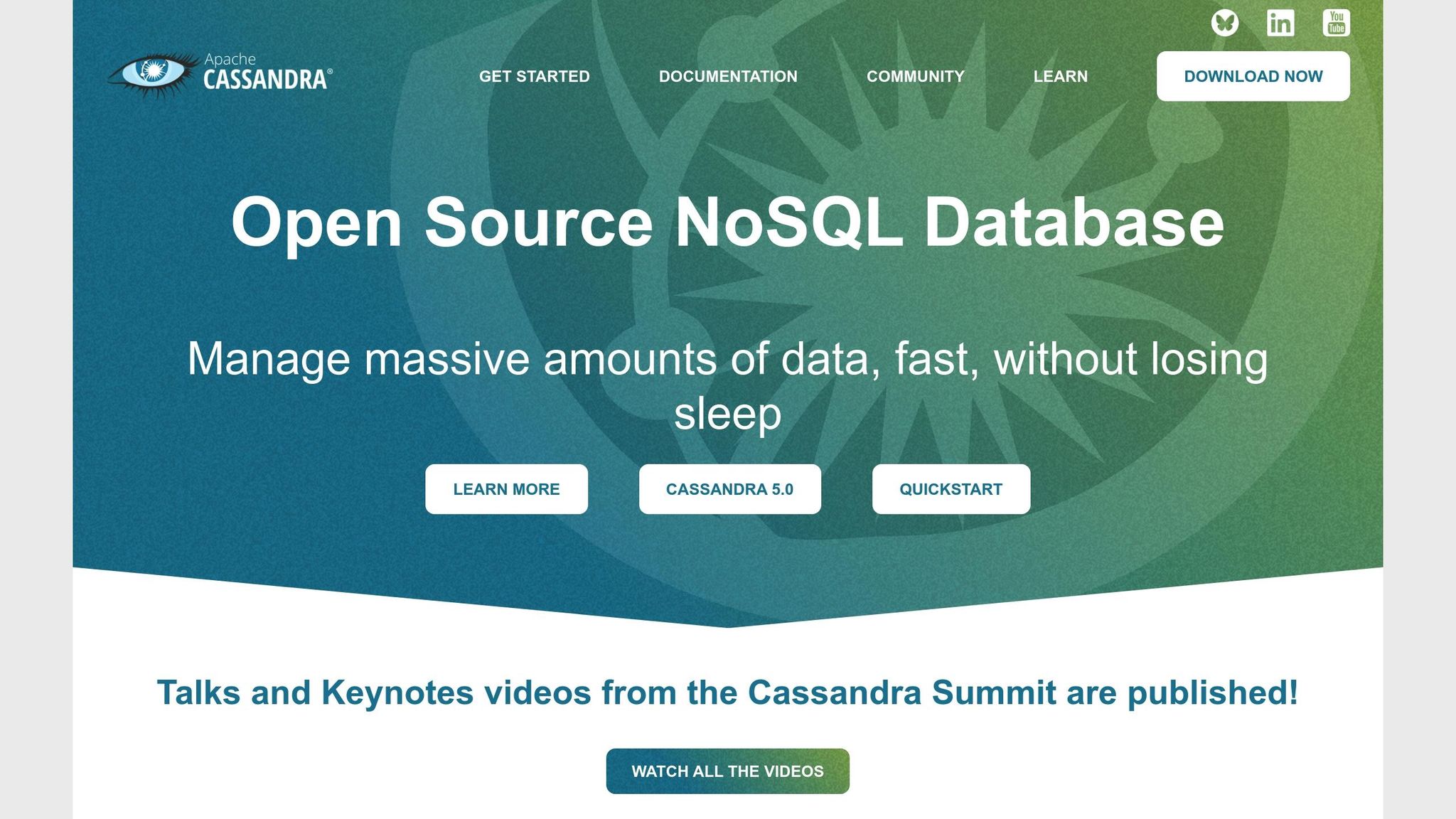Open-source and proprietary big data frameworks each have unique strengths. Open-source tools like Apache Hadoop and Spark offer flexibility and low upfront costs but require technical expertise for setup and maintenance. Proprietary systems, while more expensive initially, provide ease of use, built-in support, and predictable costs. Here's a quick comparison to help you decide:
Key Differences:
- Technical Expertise: Open-source requires skilled teams; proprietary simplifies deployment.
- Cost: Open-source has lower licensing costs but higher ongoing expenses; proprietary has higher upfront costs but predictable fees.
- Scalability: Open-source supports flexible scaling; proprietary comes with built-in optimization.
Quick Comparison:
| Feature | Open-Source Frameworks | Proprietary Frameworks |
|---|---|---|
| Cost | Low initial, high ongoing | High initial, predictable ongoing |
| Ease of Use | Requires expertise | User-friendly, pre-configured |
| Scalability | Flexible, needs tuning | Built-in, optimized |
| Support | Community-driven | Dedicated enterprise support |
Choosing the right framework depends on your budget, technical skills, and business needs. For personalized advice, consult IT experts or explore the Top Consulting Firms Directory.
InstaBlinks #21: Why choose open source Cassandra vs ...

Core Features
Big data frameworks, whether open-source or proprietary, cater to different needs with unique features. A major distinction lies in how user-friendly they are.
Open-Source Framework Features
Open-source frameworks give users full access to the source code, making them highly customizable and transparent. This allows businesses to tweak the system and integrate it with other tools as needed. They also benefit from a community of contributors who continually update and improve the software. However, using these frameworks effectively requires advanced technical expertise and ongoing maintenance. By contrast, proprietary frameworks prioritize simplicity to make setup easier.
Proprietary Framework Features
Proprietary frameworks focus on simplicity and ease of use. They often provide intuitive interfaces, quick setup processes, and dedicated support services. These features make them a good choice for businesses looking to avoid complex technical configurations.
For companies unsure of which solution fits their needs, consulting IT experts can help. The Top Consulting Firms Directory is a useful resource for finding specialists in big data strategies who can offer tailored advice for specific business requirements.
Performance and Scale
When choosing a big data framework, how well it performs and scales can directly affect your business operations. Both open-source and proprietary solutions handle scaling differently, which influences their ability to support real-time analytics.
Open-Source Scaling
Open-source frameworks are built to scale horizontally, often using affordable hardware. Tools like Apache Hadoop and Apache Spark are popular choices for managing large-scale data processing. However, getting the best performance for real-time analytics often requires expert tuning and configuration.
Proprietary Scaling
Proprietary frameworks come with built-in features for performance optimization. These include automated resource management, predictive scaling, and support for both horizontal and vertical scaling. This means they are ready to deliver strong real-time analytics performance right out of the box. Their pre-configured settings reduce the need for manual adjustments, making them easier and faster to deploy for time-sensitive tasks.
Matching your framework's scaling capabilities to your business needs is critical before diving into cost comparisons. For tailored advice, businesses can explore IT consulting services listed in the Top Consulting Firms Directory.
sbb-itb-97f6a47
Price Comparison
When evaluating the total cost of ownership (TCO), it's important to look beyond the initial price tag. Here's a breakdown of the costs associated with open-source and proprietary frameworks.
Open-Source Costs
While frameworks like Hadoop and Spark are free to use, there are additional expenses for implementation, ongoing maintenance, training, and support.
| Cost Component | First Year | Annual Recurring |
|---|---|---|
| Infrastructure | $60,000 - $96,000 | $60,000 - $96,000 |
| Personnel (2 engineers) | $240,000 - $350,000 | $240,000 - $350,000 |
| Training | $10,000 - $16,000 | $2,500 - $4,000 |
| Support | $40,000 - $60,000 | $40,000 - $60,000 |
Proprietary Costs
Proprietary frameworks typically come with fixed pricing models, resulting in higher upfront costs but more predictable recurring expenses.
| Cost Component | First Year | Annual Recurring |
|---|---|---|
| License | $100,000 - $250,000 | $100,000 - $250,000 |
| Implementation | $50,000 - $75,000 | N/A |
| Maintenance | $20,000 - $50,000 | $20,000 - $50,000 |
| Support | $25,000 - $40,000 | $25,000 - $40,000 |
Over a five-year period, open-source solutions might seem less expensive upfront but tend to have higher ongoing costs. On the other hand, proprietary frameworks require a larger initial investment but can result in lower operational expenses over time.
If you're unsure which option aligns best with your business needs, the Top Consulting Firms Directory can connect you with experienced IT consultants. They can provide a detailed TCO analysis tailored to your organization's scale and requirements.
Next, we'll explore the ideal use cases for each type of framework.
Best Applications
Let's take a closer look at where each framework shines, building on the features and scalability we’ve already covered.
Open-Source Applications
Open-source frameworks are ideal for industries that require customized solutions and real-time analytics. Sectors like e-commerce, financial services, and social media benefit greatly from these frameworks because they allow businesses to create systems tailored to their specific needs. This approach is especially useful when dealing with fast-changing data requirements.
Proprietary Applications
Proprietary frameworks are perfect for businesses looking for ready-to-use solutions with built-in enterprise support. They work particularly well in industries like healthcare, insurance, and retail, where compliance and data security are critical. These frameworks come with predefined features and professional support, making them a great choice for organizations with limited internal IT expertise.
If you’re unsure which framework suits your needs, consider consulting with IT specialists for personalized guidance.
Conclusion
Deciding on the right big data framework depends on factors like expertise, budget, and scalability needs. Each option brings its own strengths, making them suitable for different business use cases.
Here’s a quick breakdown:
- Technical Expertise: Open-source tools allow for extensive customization but require skilled in-house teams. Proprietary solutions simplify deployment and include dedicated support.
- Cost Considerations: Open-source frameworks come with low licensing costs but may involve higher maintenance expenses. Proprietary options have higher upfront costs but predictable ongoing fees.
- Scalability: Open-source allows flexibility in infrastructure choices, while proprietary platforms often include built-in scaling capabilities.
For organizations seeking expert advice, IT consulting specialists can help evaluate requirements and ensure a smooth implementation process. Explore the Top Consulting Firms Directory to connect with firms specializing in digital transformation and data analytics, offering end-to-end support from planning to deployment.


